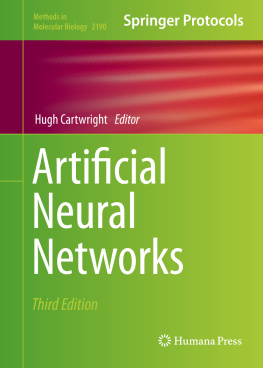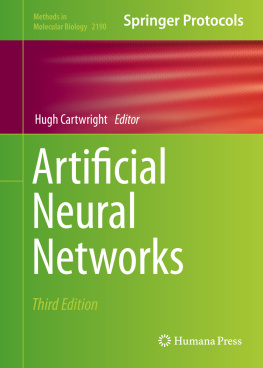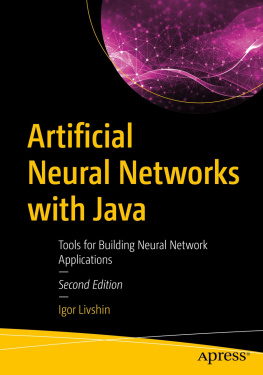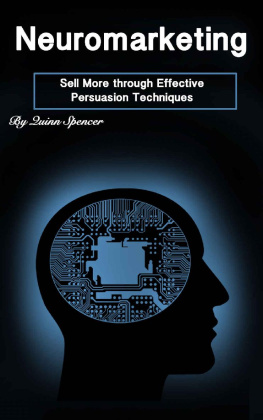Hugh Cartwright - Artificial Neural Networks
Here you can read online Hugh Cartwright - Artificial Neural Networks full text of the book (entire story) in english for free. Download pdf and epub, get meaning, cover and reviews about this ebook. year: 2021, publisher: Springer US, genre: Home and family. Description of the work, (preface) as well as reviews are available. Best literature library LitArk.com created for fans of good reading and offers a wide selection of genres:
Romance novel
Science fiction
Adventure
Detective
Science
History
Home and family
Prose
Art
Politics
Computer
Non-fiction
Religion
Business
Children
Humor
Choose a favorite category and find really read worthwhile books. Enjoy immersion in the world of imagination, feel the emotions of the characters or learn something new for yourself, make an fascinating discovery.
- Book:Artificial Neural Networks
- Author:
- Publisher:Springer US
- Genre:
- Year:2021
- Rating:5 / 5
- Favourites:Add to favourites
- Your mark:
- 100
- 1
- 2
- 3
- 4
- 5
Artificial Neural Networks: summary, description and annotation
We offer to read an annotation, description, summary or preface (depends on what the author of the book "Artificial Neural Networks" wrote himself). If you haven't found the necessary information about the book — write in the comments, we will try to find it.
Artificial Neural Networks — read online for free the complete book (whole text) full work
Below is the text of the book, divided by pages. System saving the place of the last page read, allows you to conveniently read the book "Artificial Neural Networks" online for free, without having to search again every time where you left off. Put a bookmark, and you can go to the page where you finished reading at any time.
Font size:
Interval:
Bookmark:
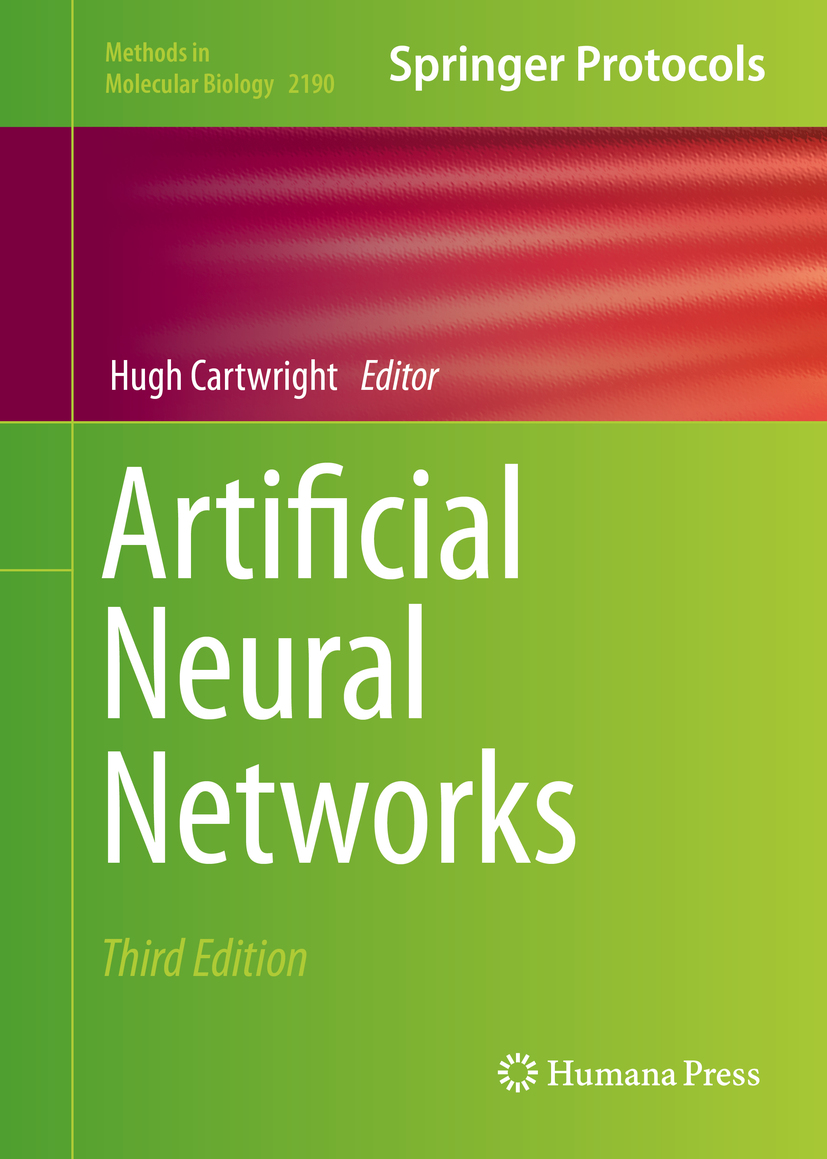
For further volumes: http://www.springer.com/series/7651 For over 35 years, biological scientists have come to rely on the research protocols and methodologies in the critically acclaimed Methods in Molecular Biology series. The series was the first to introduce the step-by-step protocols approach that has become the standard in all biomedical protocol publishing. Each protocol is provided in readily-reproducible step-by step fashion, opening with an introductory overview, a list of the materials and reagents needed to complete the experiment, and followed by a detailed procedure that is supported with a helpful notes section offering tips and tricks of the trade as well as troubleshooting advice. These hallmark features were introduced by series editor Dr. John Walker and constitute the key ingredient in each and every volume of the Methods in Molecular Biology series. Tested and trusted, comprehensive and reliable, all protocols from the series are indexed in PubMed.
For over 35 years, biological scientists have come to rely on the research protocols and methodologies in the critically acclaimed Methods in Molecular Biology series. The series was the first to introduce the step-by-step protocols approach that has become the standard in all biomedical protocol publishing. Each protocol is provided in readily-reproducible step-by-step fashion, opening with an introductory overview, a list of the materials and reagents needed to complete the experiment, and followed by a detailed procedure that is supported with a helpful notes section offering tips and tricks of the trade as well as troubleshooting advice. These hallmark features were introduced by series editor Dr. John Walker and constitute the key ingredient in each and every volume of the Methods in Molecular Biology series. Tested and trusted, comprehensive and reliable, all protocols from the series are indexed in PubMed.

This Humana imprint is published by the registered company Springer Science+Business Media, LLC, part of Springer Nature.
The registered company address is: 1 New York Plaza, New York, NY 10004, U.S.A.
Two decades ago it would have been hard to foresee the remarkable growth in the use of artificial intelligence (AI) in the physical and life sciences. But there is a simple explanation for that rise: AI tools work.
Software is now readily available for Artificial Neural Networks, Genetic Algorithms, Deep Learning, Random Forests, Support Vector Machines, and other methods. While the software is not always trivial to use, it is becoming both more user-friendly and more powerful; this is encouraging scientists, whatever their specialization, to dive in.
This book showcases some of the studies now being pursued in the life sciences: topics range from the identification of genotype-phenotype correlations to the use of machine learning to evaluate biomedical time series; from de novo drug design to using recursive neural networks in the scoring of protein models; from studies of gene regulation in bacteria to the application of machine learning to the assessment of tumor tissue, and many more.
Traditional methods of analysis are in no imminent danger of being pushed out of the door by AI. On the contrary, these well-tested methods are increasingly being combined with the newer computational tools to enhance understanding of the large and complex datasets that the life sciences can generate.
As in earlier editions, readers who are intrigued by the applications discussed in these chapters will find practical details to help them apply the methods of AI in their own work.
Font size:
Interval:
Bookmark:
Similar books «Artificial Neural Networks»
Look at similar books to Artificial Neural Networks. We have selected literature similar in name and meaning in the hope of providing readers with more options to find new, interesting, not yet read works.
Discussion, reviews of the book Artificial Neural Networks and just readers' own opinions. Leave your comments, write what you think about the work, its meaning or the main characters. Specify what exactly you liked and what you didn't like, and why you think so.

